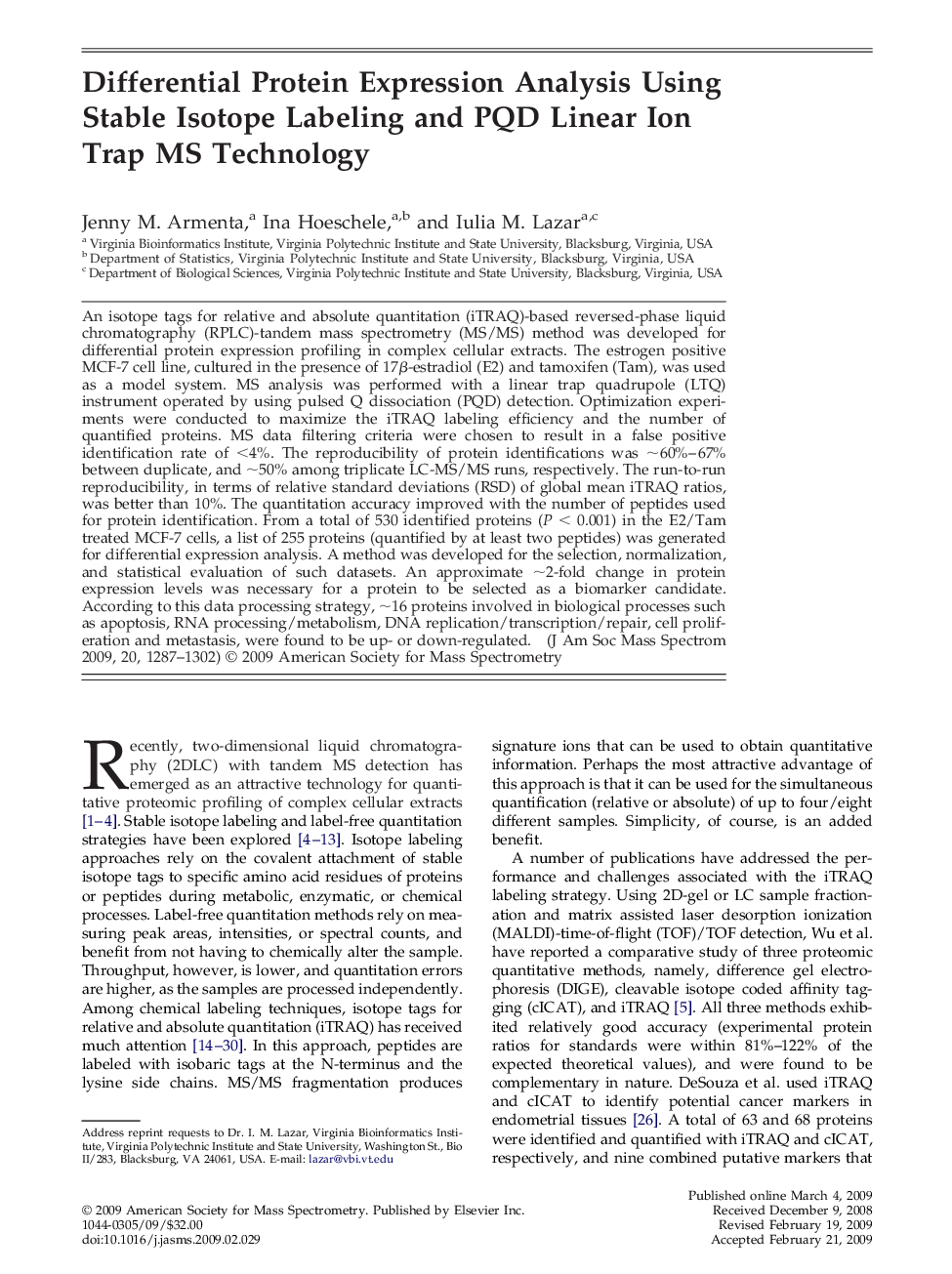| Article ID | Journal | Published Year | Pages | File Type |
|---|---|---|---|---|
| 1195245 | Journal of the American Society for Mass Spectrometry | 2009 | 16 Pages |
An isotope tags for relative and absolute quantitation (iTRAQ)-based reversed-phase liquid chromatography (RPLC)-tandem mass spectrometry (MS/MS) method was developed for differential protein expression profiling in complex cellular extracts. The estrogen positive MCF-7 cell line, cultured in the presence of 17β-estradiol (E2) and tamoxifen (Tam), was used as a model system. MS analysis was performed with a linear trap quadrupole (LTQ) instrument operated by using pulsed Q dissociation (PQD) detection. Optimization experiments were conducted to maximize the iTRAQ labeling efficiency and the number of quantified proteins. MS data filtering criteria were chosen to result in a false positive identification rate of <4%. The reproducibility of protein identifications was ∼60%–67% between duplicate, and ∼50% among triplicate LC-MS/MS runs, respectively. The run-to-run reproducibility, in terms of relative standard deviations (RSD) of global mean iTRAQ ratios, was better than 10%. The quantitation accuracy improved with the number of peptides used for protein identification. From a total of 530 identified proteins (P < 0.001) in the E2/Tam treated MCF-7 cells, a list of 255 proteins (quantified by at least two peptides) was generated for differential expression analysis. A method was developed for the selection, normalization, and statistical evaluation of such datasets. An approximate ∼2-fold change in protein expression levels was necessary for a protein to be selected as a biomarker candidate. According to this data processing strategy, ∼16 proteins involved in biological processes such as apoptosis, RNA processing/metabolism, DNA replication/transcription/repair, cell proliferation and metastasis, were found to be up- or down-regulated.
Graphical AbstractPQD-MS can be successfully used for protein quantitation.Figure optionsDownload full-size imageDownload high-quality image (151 K)Download as PowerPoint slide
